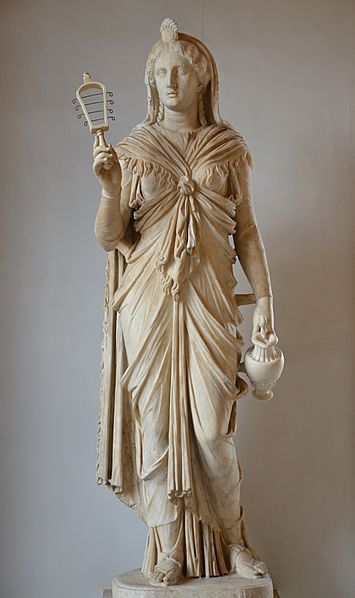Archivo: Marble statue of Isis, the goddess holds a situla and sistrum, ritual implements used in her worship, from 117 until 138 AD, found at Hadrian's Villa (Pantanello), Palazzo Nuovo, Capitoline Museums (12945630725)

Descripción: The figure places her weight on her left and moves her left slightly back and to the side. In her right hand she holds a small jug by her side (this object is the product of a restoration) and in her left a sistrum (a musical instrument). Originally an Egyptian goddess, the worship of Isis spread to the Greco-Roman world in the 4th century B.C. after the conquest of Alexander the Great over Egypt. Here the goddess is shown in a long chiton, a typical style of Greek dress. She also wears a mantle that ties over her breasts. A piece of the mantle is used as a veil to cover her head, which is also adorned with a sun disk. The work dates to the first century A.D. From Villa Adriana. capitolini.info/scu00744/
Título: Marble statue of Isis, the goddess holds a situla and sistrum, ritual implements used in her worship, from 117 until 138 AD, found at Hadrian's Villa (Pantanello), Palazzo Nuovo, Capitoline Museums (12945630725)
Créditos: Marble statue of Isis, the goddess holds a situla and sistrum, ritual implements used in her worship, from 117 until 138 AD, found at Hadrian's Villa (Pantanello), Palazzo Nuovo, Capitoline Museums
Autor(a): Carole Raddato from FRANKFURT, Germany
Términos de Uso: Dominio Público
Licencia: Dominio Público
¿Se exige la atribución?: No
Usos del archivo
La siguiente página enlaza a este archivo:

